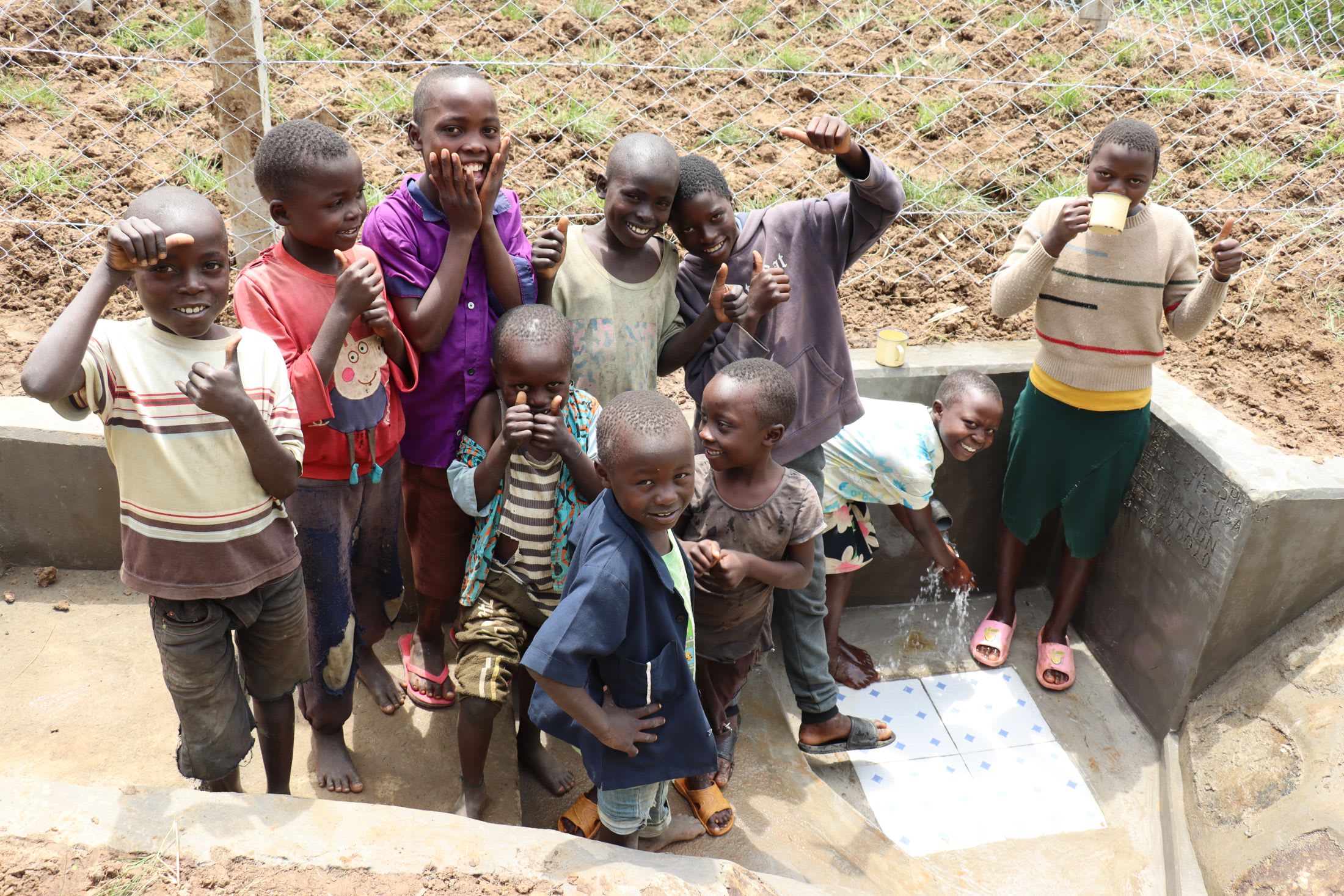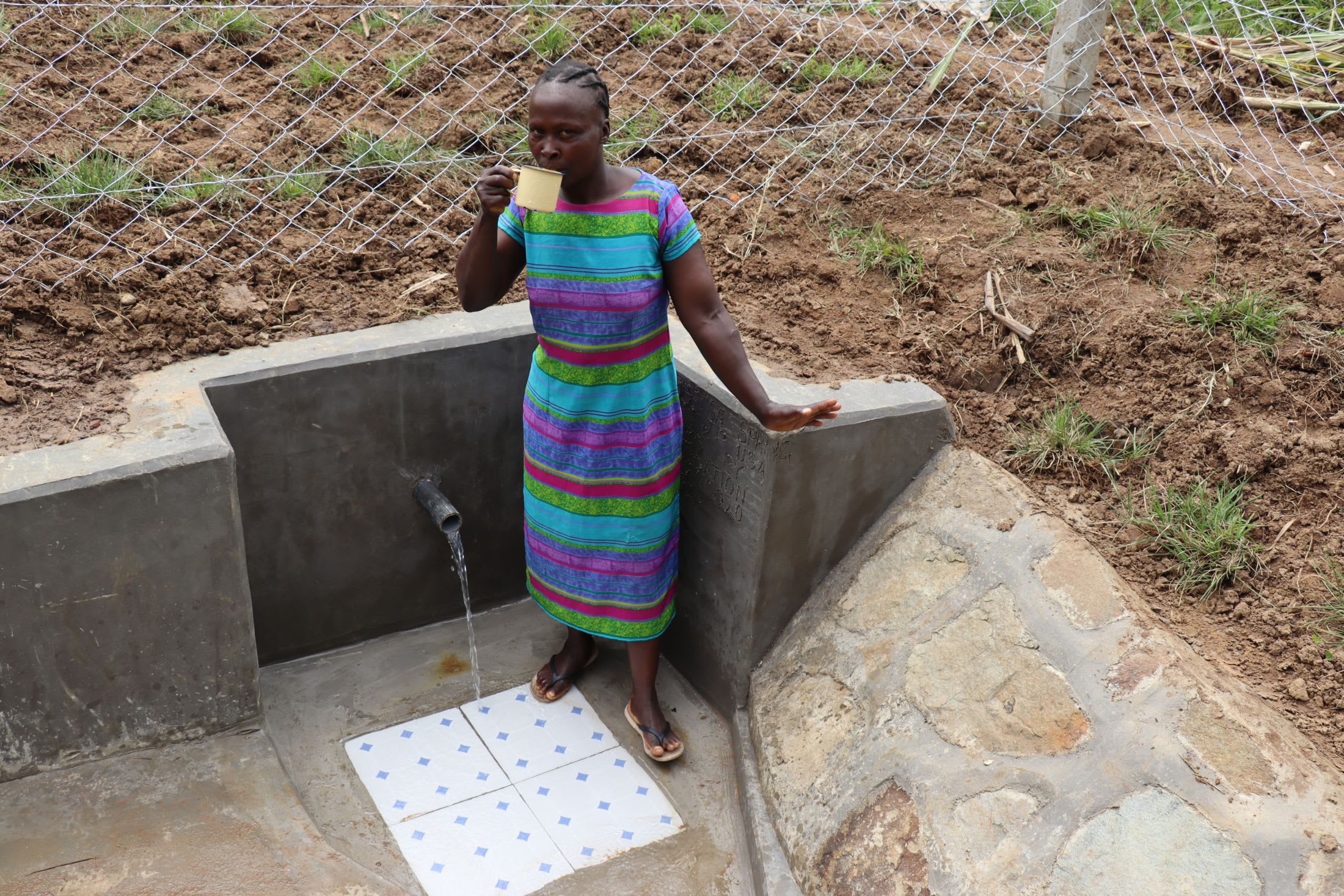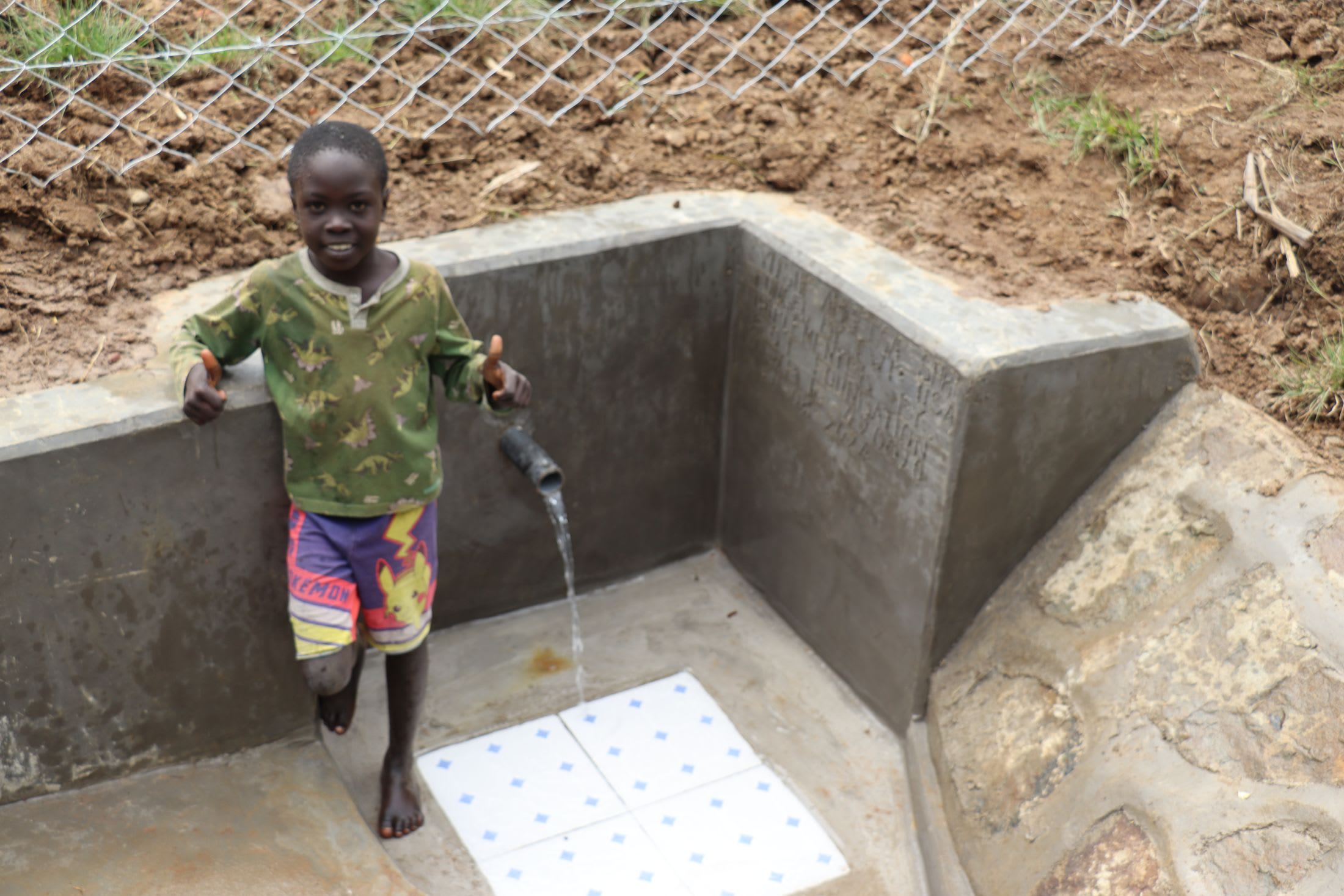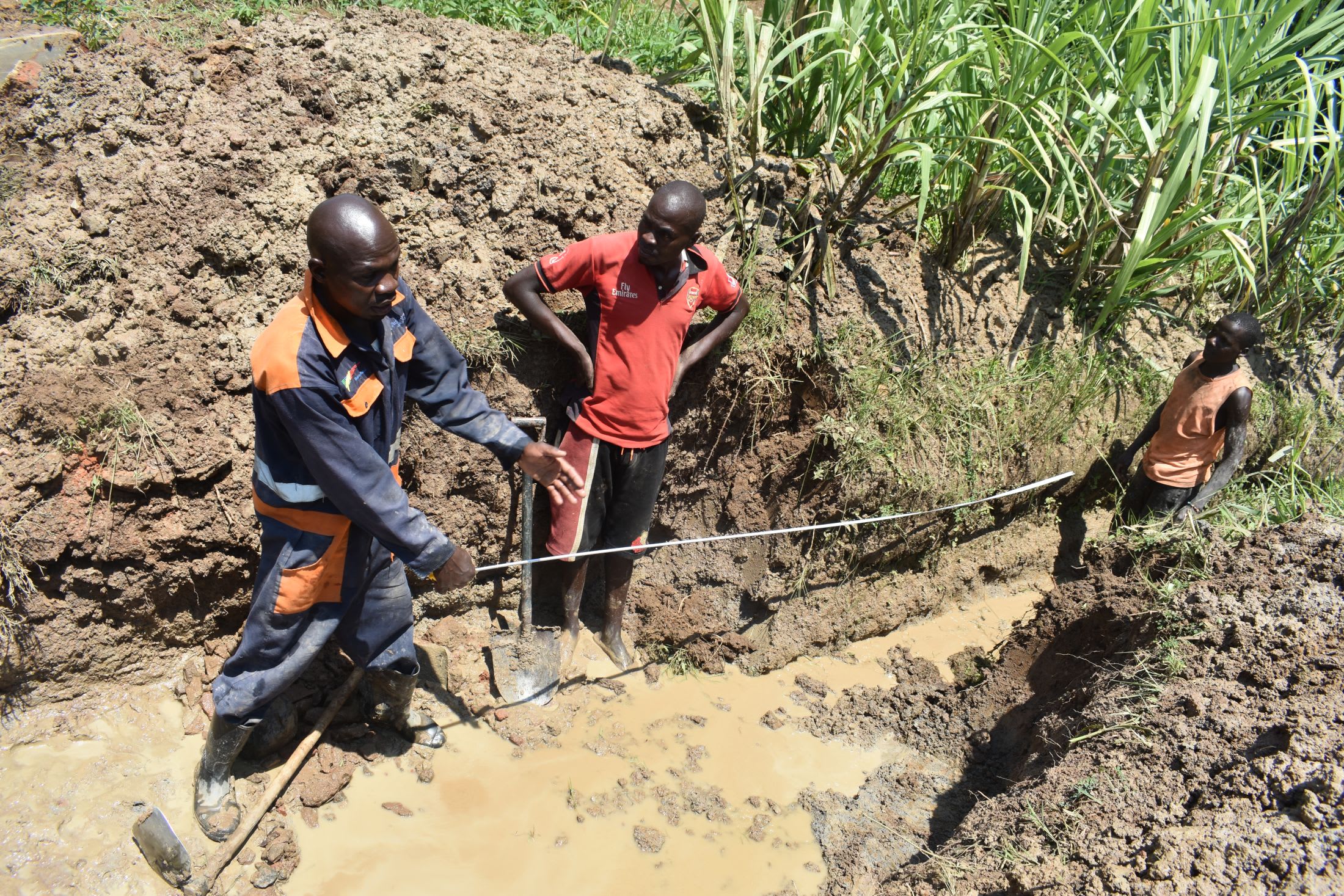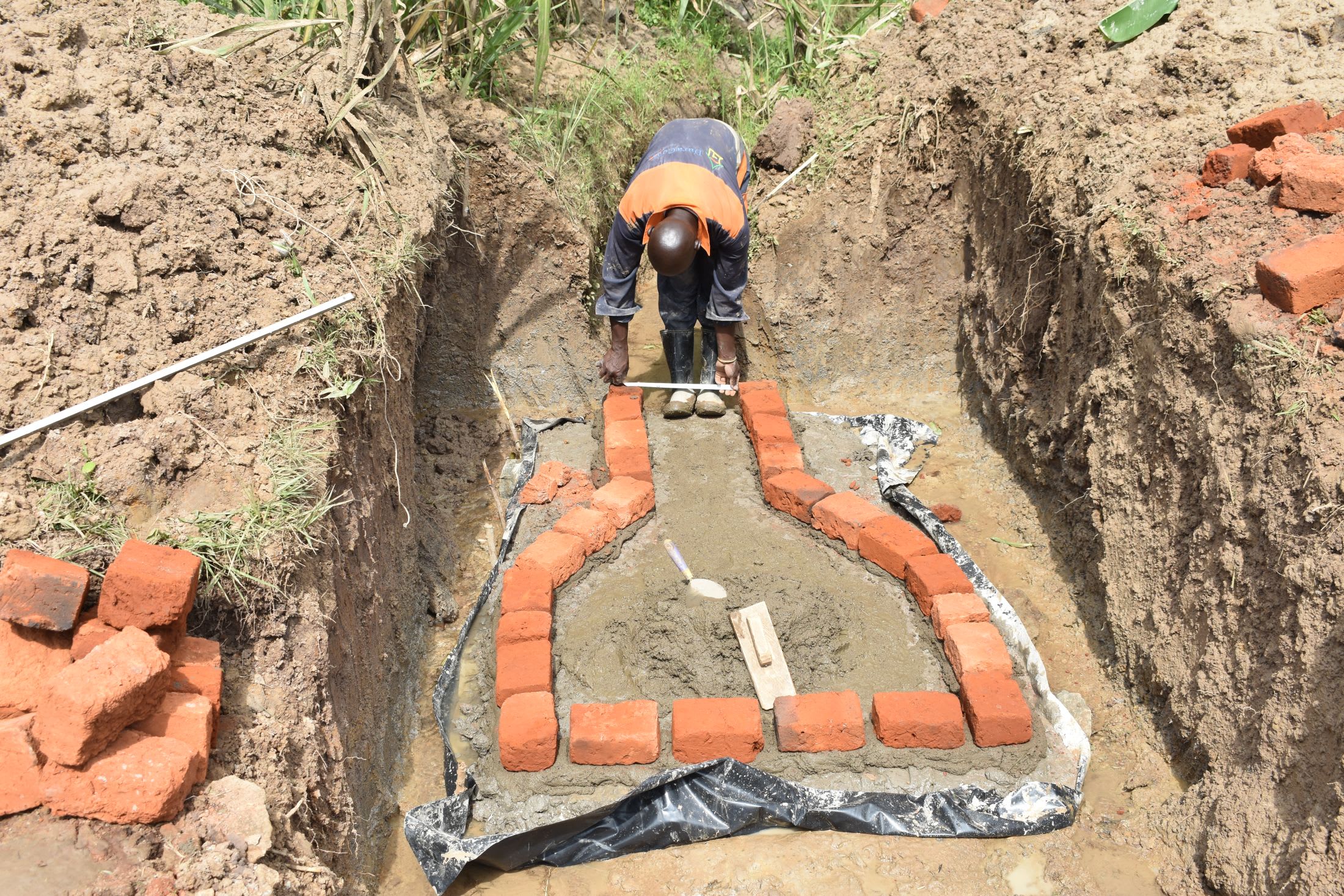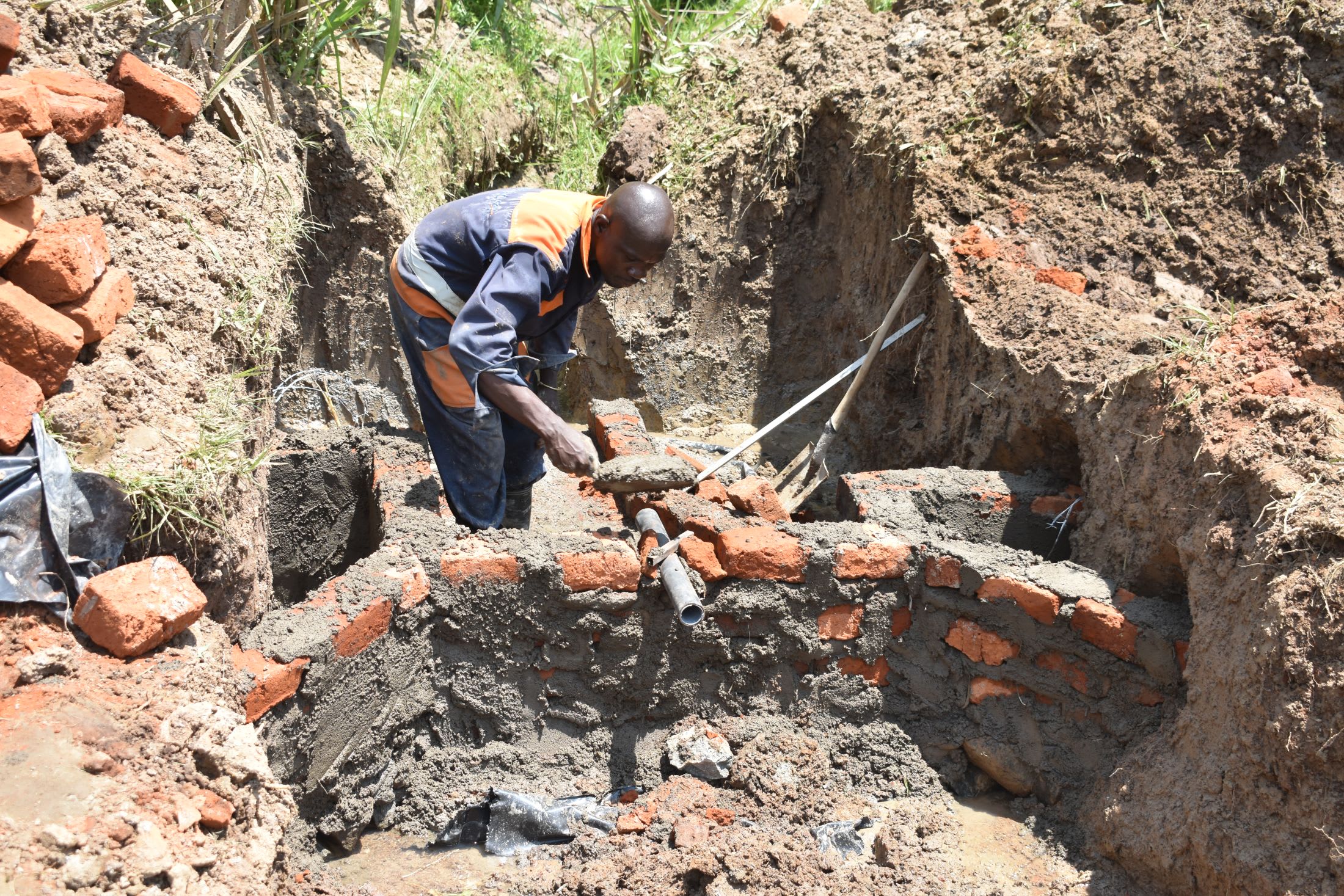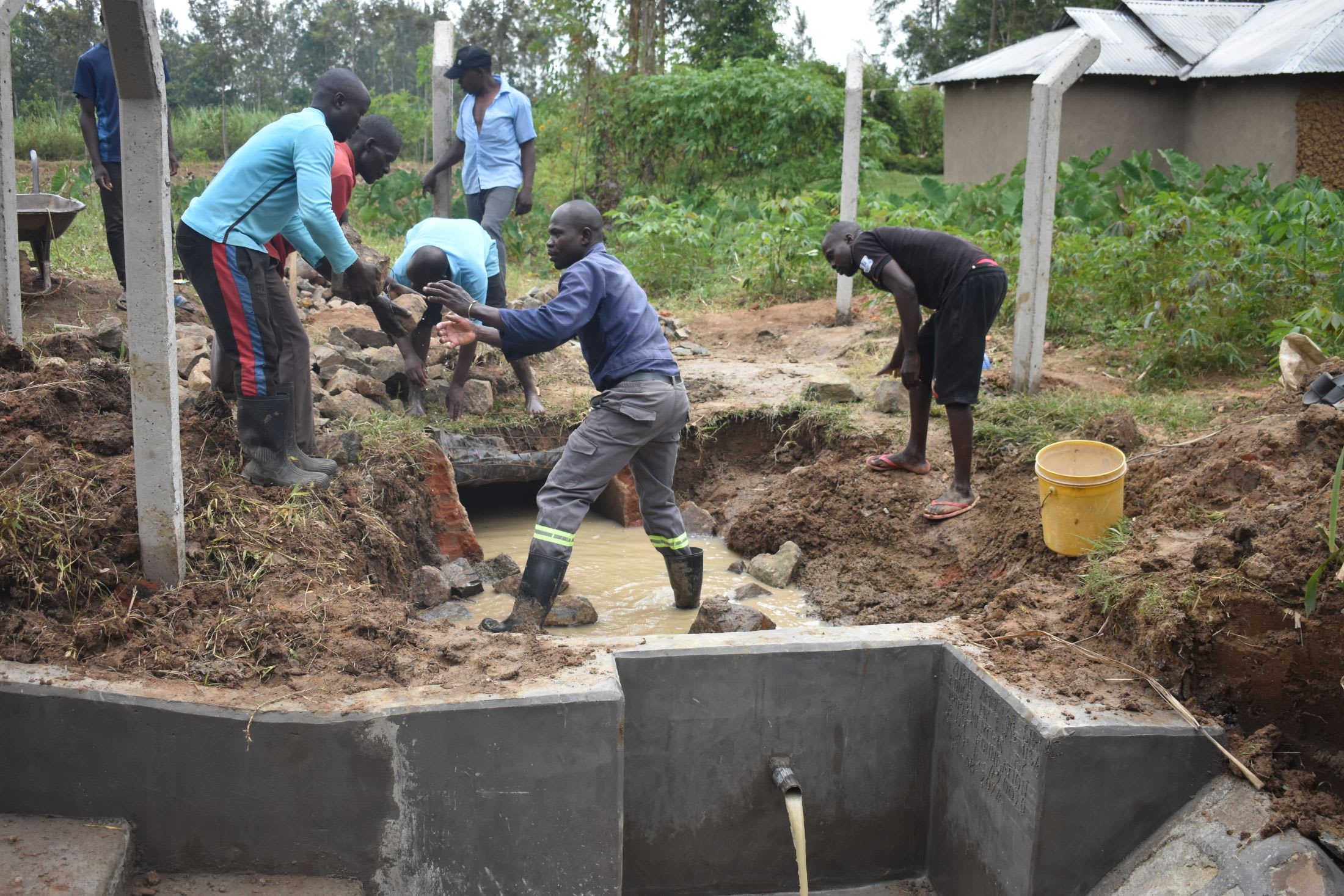The 560 people of the Emayala Community struggle to access sufficient water. The community's primary water source is a dysfunctional, unprotected spring that faces several challenges.
"The spring was once protected by the community though without expertise; therefore, the water does not pass through the pipe. This has made the spring users go back to scooping water from the drawing point where it broke down," said field officer Jacqueline Kangu.

Looking at the spring, it is evident that although the community attempted to protect it in the past, the water no longer flows from the collection pipe. Instead, it bubbles up beneath the crumbling cement floor, creating a pool of murky, algae-filled water. Community members must teeter on the edge of the hole and submerge their containers beneath the water to scoop up water into their containers.
This tedious process causes overcrowding, wasting people's valuable time, and conflicts among the spring users, which challenges the unity in the community.
Five-year-old Samir O. can be seen below scooping water from the hole because he was accompanied by adults, but it is a task he does not normally do on his own for fear he will fall into the water.
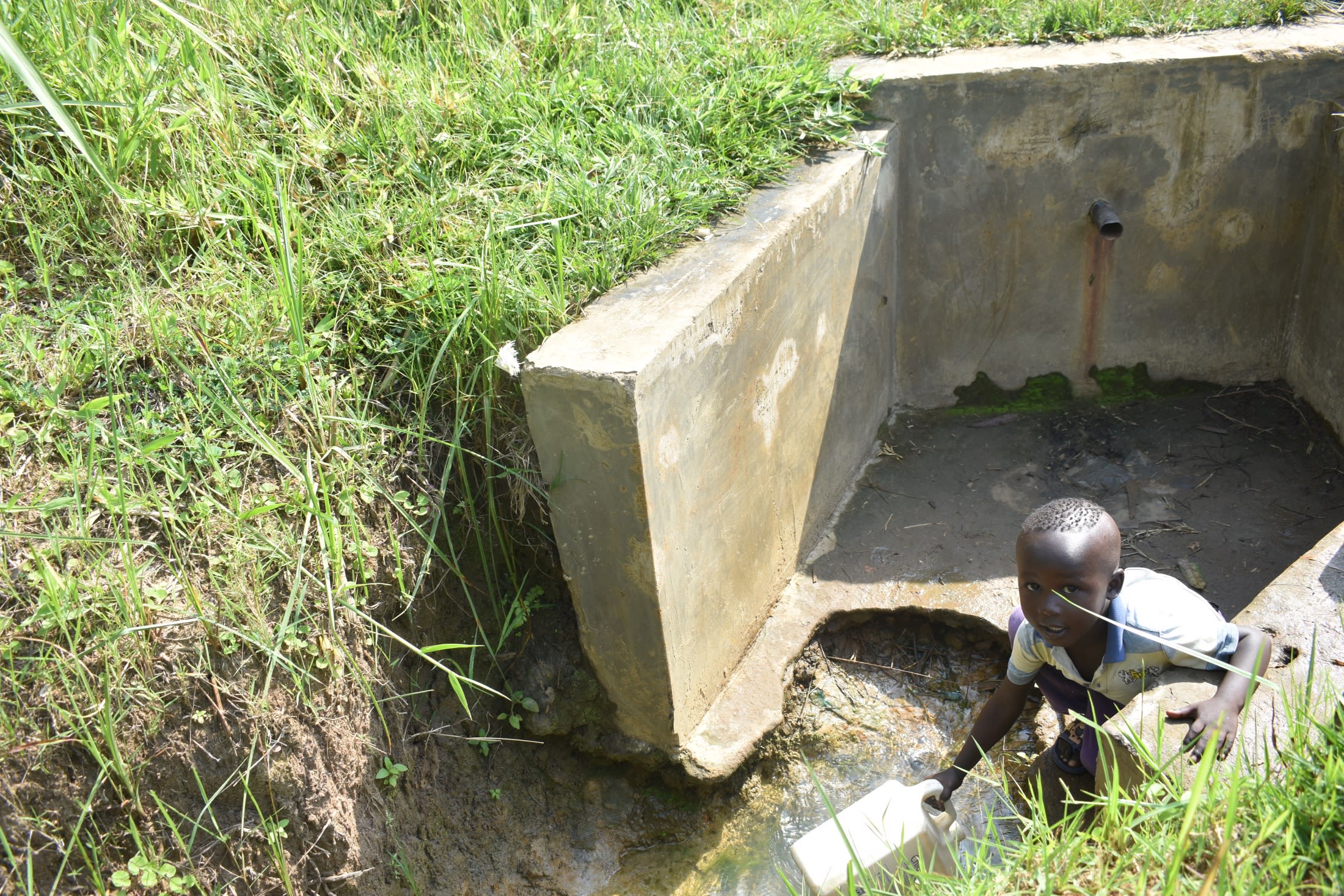
"[I] am not able to draw water because I may fall inside the scoop hole," said young Samir.
Not surprisingly, the water people are working so hard to collect is contaminated and often makes them ill with waterborne illnesses such as diarrhea, stomachache, and typhoid.
"It makes me spend my little income on treating my family and myself due to reinfections caused by contaminated water. [I] am not able to save even a single cent, and therefore [I am] unable to take care of my basic needs and emergencies. I live a hand-to-mouth life, which really frustrates me," said 27-year-old Saida Inganga.
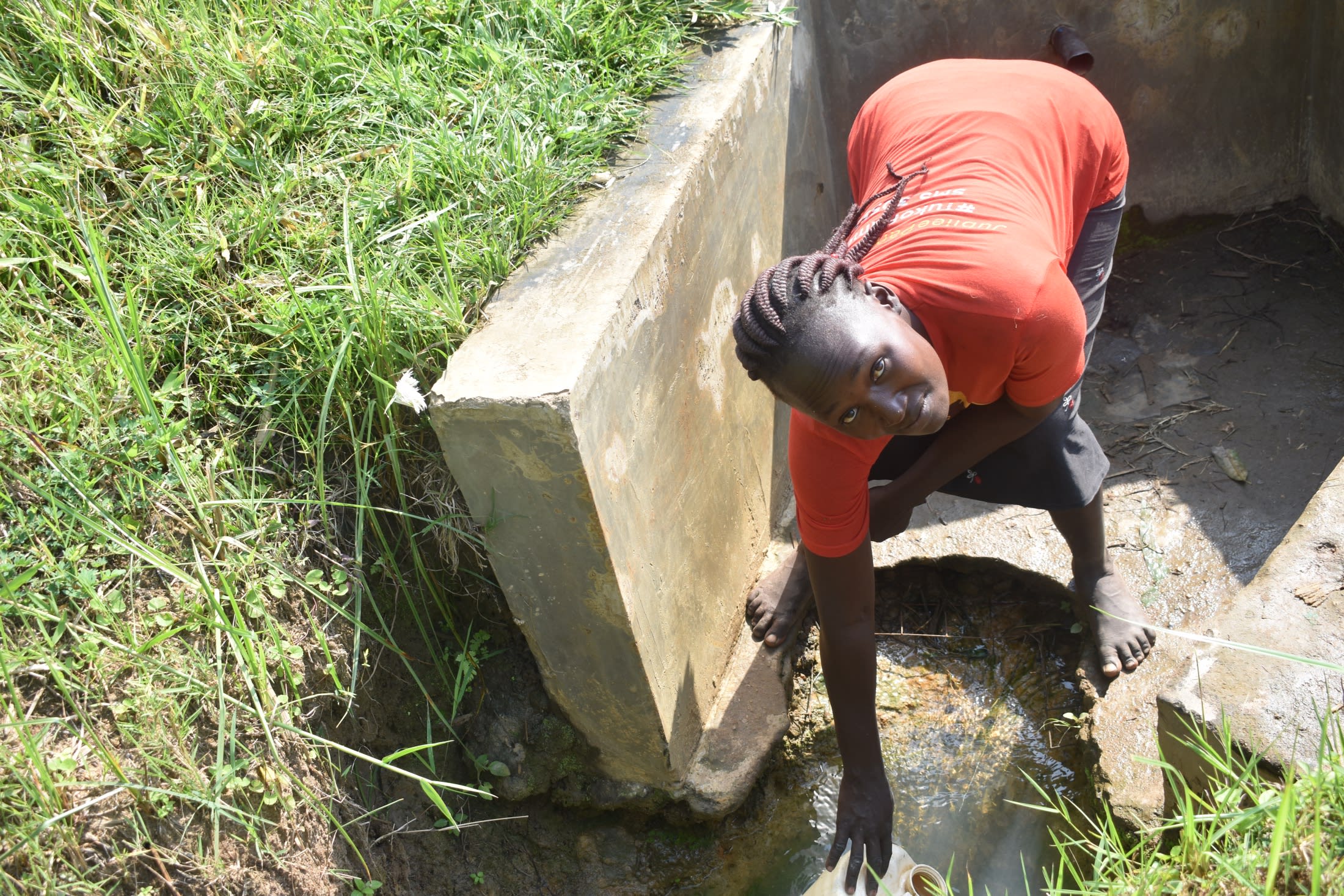
The proper protection of the spring will enable community members to safely and efficiently collect clean water so they have time for the vital things they need to accomplish each day, and hopefully, there will be more unity within the community. Samir and his parents will no longer have to worry about him getting hurt if he is sent to collect water, and Saida will be able to drink the water without suffering from water-related illnesses that steal her resources.
"Yusuf Ambetsa Spring serves a good number of people in this community, so its protection will enable this community to live healthy and productive lives," concluded Jacqueline.
The Proposed Solution, Determined Together...
At The Water Project, everyone has a part in conversations and solutions. We operate in transparency, believing it benefits everyone. We expect reliability from one another as well as our water solutions. Everyone involved makes this possible through hard work and dedication.
In a joint discovery process, community members determine their most advantageous water solution alongside our technical experts. Read more specifics about this solution on the What We're Building tab of this project page. Then, community members lend their support by collecting needed construction materials (sometimes for months ahead of time!), providing labor alongside our artisans, sheltering and feeding the builders, and supplying additional resources.
Water Access for Everyone
This water project is one piece in a large puzzle. In Kenya, Sierra Leone, and Uganda, we're working toward complete coverage of reliable, maintained water sources that guarantee public access now and in the future within a 30-minute round trip for each community, household, school, and health center. One day, we hope to report that this has been achieved!
Training on Health, Hygiene & More
With the community's input, we've identified topics where training will increase positive health outcomes at personal, household, and community levels. We'll coordinate with them to find the best training date. Some examples of what we train communities on are:
- Improved hygiene, health, and sanitation habits
- Safe water handling, storage & treatment
- Disease prevention and proper handwashing
- Income-generation
- Community leadership, governance, & election of a water committee
- Operation and maintenance of the water point
Chlorine Dispensers
Installing chlorine dispensers is an important piece of our spring protection projects. Protecting a spring provides community members with an improved water source, but it doesn’t prevent contamination once the water is collected and stored. For example, if the water is clean and the container is dirty, the water will become contaminated.
We ensure that each chlorine dispenser is filled with diluted chlorine on a consistent schedule so that people can add pre-measured drops to each container of water they collect. That way, community members can feel even more confident in the quality of their water.



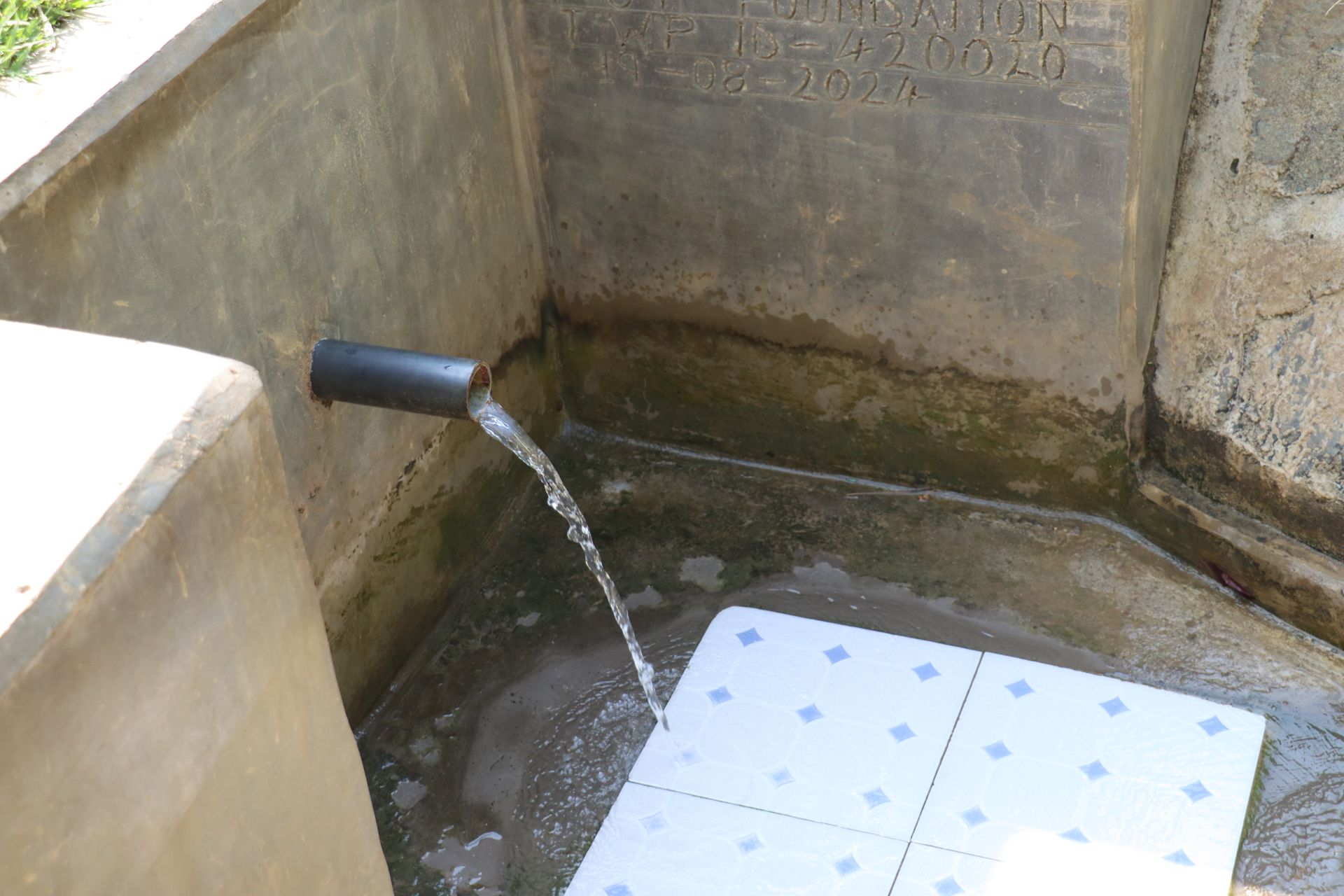

 Protected Spring
Protected Spring
 Rehabilitation Project
Rehabilitation Project












